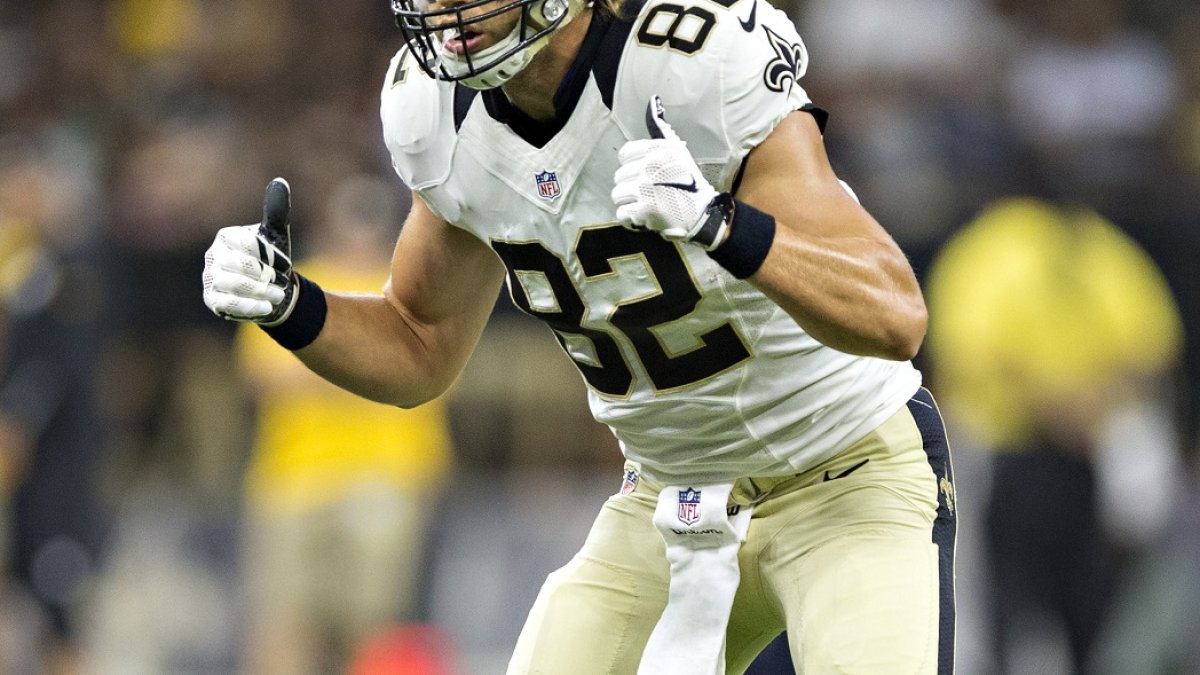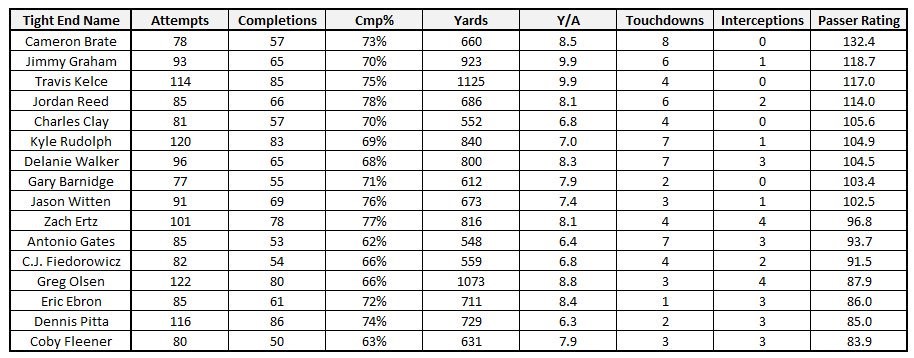(“Metrics that Matter” is a short feature that appears every Tuesday, Wednesday, and Saturday, highlighting a notable fantasy lesson to be learned from PFF’s advanced stats.)
I’ve been a fantasy analyst since 2012. In my first ever fantasy article, I half-jokingly correctly predicted my favorite player (R.A. Dickey) would win the Cy Young. My first ever article for PFF (2015), I correctly predicted Cam Newton (ADP QB15, finished QB1 PPG) and Jordan Reed (ADP undrafted, finished TE1 PPG) would be the steals of that year’s draft at their respective positions. These are probably the two highlights of my fantasy writing career. In that time I’ve had many more hits and many more (but hopefully significantly less) misses.
My biggest miss last season was ranking Coby Fleener as my No. 5 overall tight end in PPR leagues. I still stand by the reasoning for much of my optimism surrounding Fleener, but I overlooked one important detail – historic inefficiency.
Thanks to Actual Opportunity, we can look at a player’s expected fantasy points based on the value of their offensive role. In the case of Fleener, we’re looking at all of his targets, how far from the end zone he was when the ball was snapped, and how far each ball was thrown through the air. Since Fleener has entered the league, he has averaged only 1.67 PPR fantasy points per target. Based on our 10-year sample of play-by-play data, he should have averaged 1.74 fantasy points per target. Among all 33 tight ends with at least 200 targets over this span, Fleener was only more efficient than Jared Cook and Marcedes Lewis. If we factor in the quality of quarterback play among each of these three tight ends, Fleener looks even worse.
For his career, when targeting Dwayne Allen, Erik Swoope, and Jack Doyle, Andrew Luck averages a passer rating of 123.1. When targeting Coby Fleener, he averaged a passer rating of only 90.5.
These were the red flags I wrongfully ignored last season. Now it’s time to own up to my mistakes and dig deep into Fleener’s numbers to see just how embarrassing my recommendation ended up being.
Last season, Drew Brees averaged a 83.9 passer rating when targeting Fleener. Among all other Saints receivers with at least 50 targets, Brees averaged a 115.3 passer rating.
I’ve written before of Brees’ impressive efficiency numbers, and how this relates to his receivers – dubbing this phenomenon “A Rising Brees Lifts All Ships.” Unfortunately for many of my fantasy teams last season, this did not extend to Fleener. Over the past six seasons, there are 31 instances of a receiver recording at least 50 targets from Brees in a single season. In 25 of these instances, this resulted in a passer rating of over 100 for Brees. Over this six season sample, Fleener’s 2016 season was the least-efficient of any of Brees’ receivers, ranking last in passer rating when targeted.
Not only was Fleener’s 2016 a disappointment relative to Brees’ impressive efficiency numbers, but he was also woefully inefficient relative to his peers, ranking last in receiver rating (passer rating when targeted) among all tight ends with at least 75 targets.
My concern with Fleener isn’t just how poorly he played last season, but I’m also concerned with usage and playing time as well.
Fellow New Orleans tight end Josh Hill suffered a broken fibula in Week 13. Weeks 1-6, Fleener saw 71 percent of the team’s snaps, compared to Hill’s 17 percent. Weeks 7-12, Fleener saw only 43 percent to Hill’s 67 percent.
What does this mean for fantasy?
Obviously this isn’t very encouraging for Fleener’s fantasy prospects in 2017. He was woefully inefficient throughout the season and was being edged out for playing time prior to Hill’s injury. Still, the starting tight end role in a Drew Brees offense remains a valuable one for fantasy football.
Last season, the Saints ranked tied for 18th in team tight end fantasy points, yet over the prior eight seasons the Saints have ranked inside the top-six in fantasy points scored by tight ends every season except for one (where they finished 12th). That’s including Jimmy Graham’s rookie season (2010) when he started five games and caught only 31 passes. That is also including 2008 and 2009, when Jeremy Shockey led the team in tight end targets. That is also including 2015, when a 35-year-old Ben Watson saw career highs in targets, receptions, yards, and touchdowns, finishing the season as fantasy’s No. 7 tight end.
Fleener was only asked to block on 2.7 percent of the team’s passing snaps last season – the lowest rate in the league. During his time in New Orleans, Jimmy Graham never eclipsed 5.0 percent. There are no fantasy-point-per-blocking leagues, so this is likely another plus for Fleener if he maintains his role. He also has the benefit of the fifth-easiest tight end schedule this season.
Despite the poor target efficiency from Fleener, he still managed to finish 13th-best at the position in standard leagues and 15th-best in PPR leagues. He’s currently being drafted as the 15th tight end off the board in MFL10 best ball leagues. Balancing risk versus reward here, that’s still a bit too rich for my liking. If looking for a high-ceiling fantasy tight end, I’m much more excited about Jack Doyle (who we will be featured in our next article) at ADP TE13.





 © 2025 PFF - all rights reserved.
© 2025 PFF - all rights reserved.